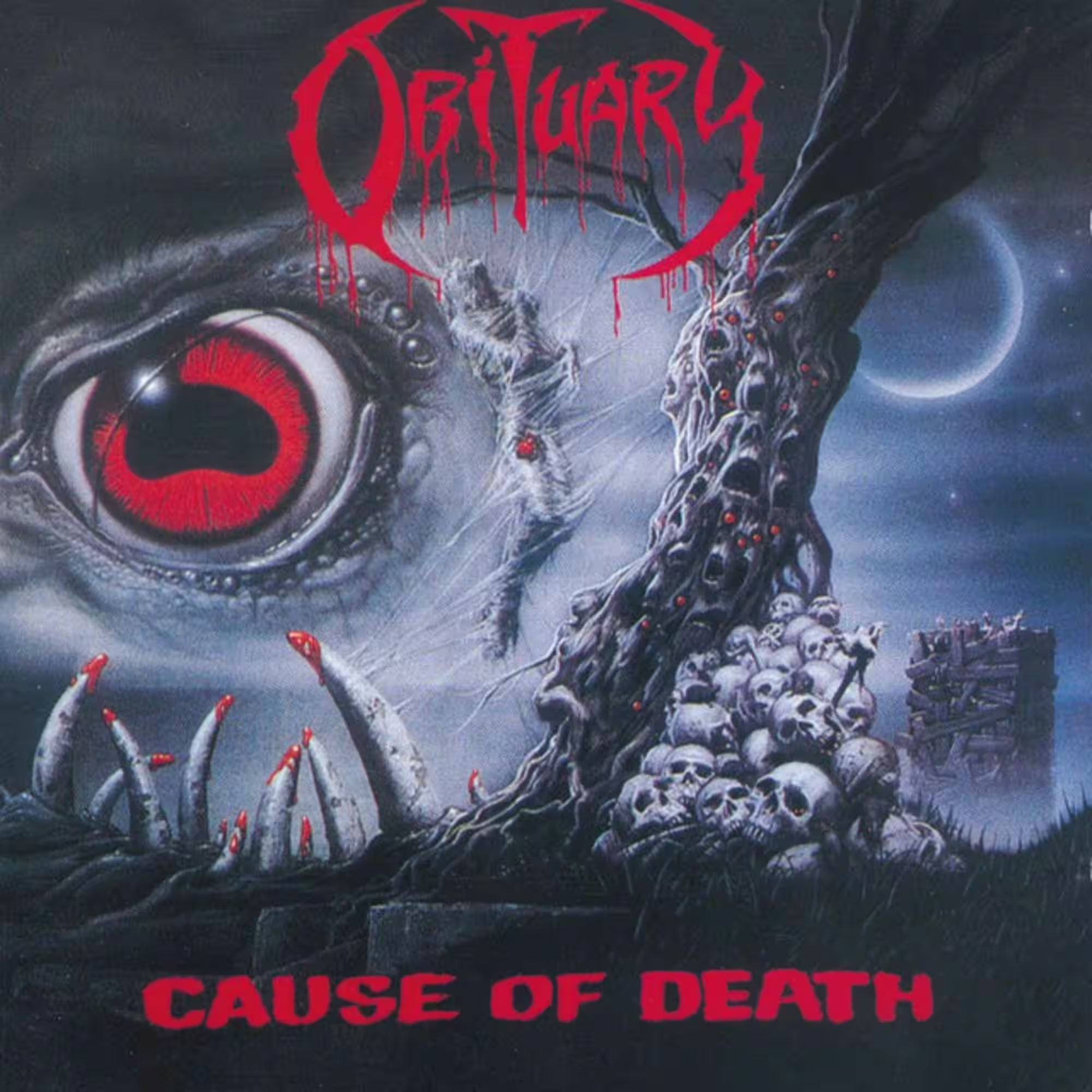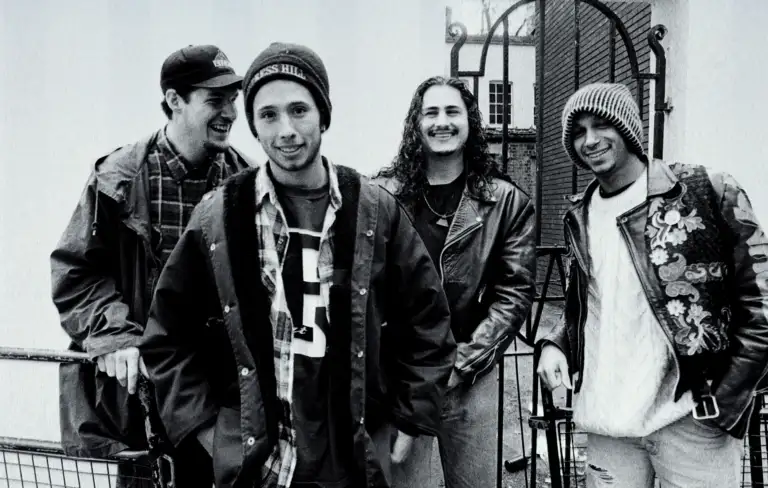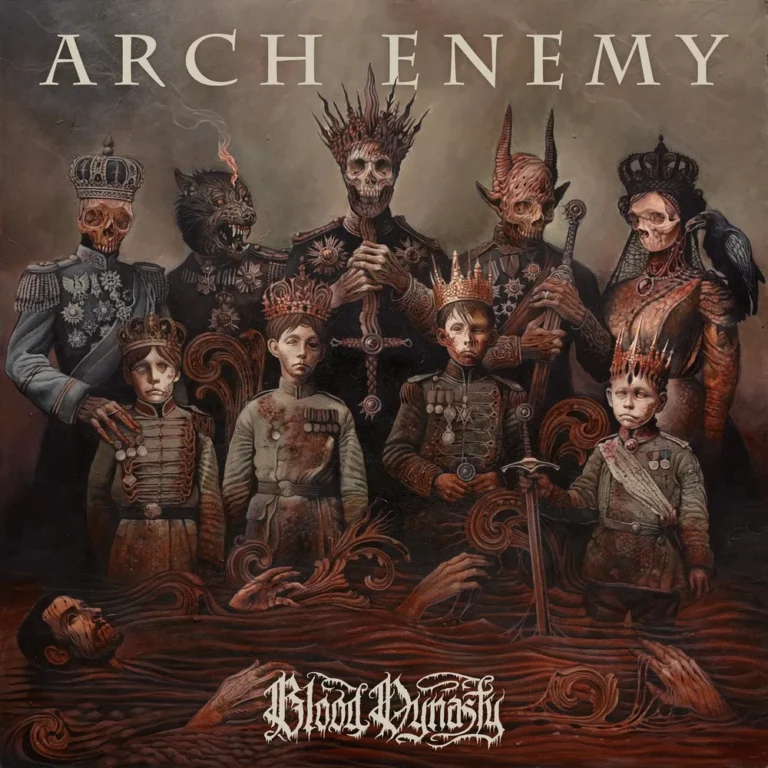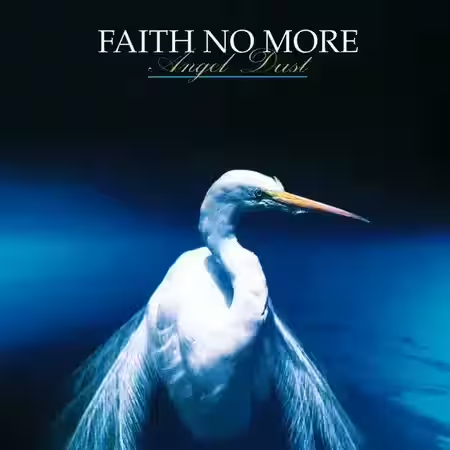
Introduction
In the realm of death metal, few albums have left an indelible mark quite like Obituary’s Cause of Death. Released on September 19, 1990, this seminal work not only solidified the band’s place in the burgeoning Florida death metal scene but also set a new standard for the genre. Known for its haunting cover art and relentless musicality, Cause of Death remains a cornerstone of death metal history, influencing countless bands and musicians over the decades.
This article delves into the album’s creation, recording process, commercial performance, and enduring legacy. It provides a comprehensive analysis of the singles and tracks, explores the influences behind the music, and examines the critical reception over the years. Additionally, it highlights the band’s journey post-release and the various remasters and reissues that have kept the album relevant to new generations of metal fans.
| Attribute | Details |
|---|---|
| Release date | September 19, 1990 |
| Album title | Cause of Death |
| Genre | Death Metal |
| Total runtime | 41:02 |
| Number of tracks | 9 |
| Record label | Roadrunner Records |
| Recording studio | Morrisound Recording, Tampa, Florida |
| Producer(s) | Scott Burns, Obituary |
The impact of Cause of Death on the music industry cannot be overstated. It brought a new level of production quality and musicianship to death metal, largely thanks to the expertise of producer Scott Burns. His work at Morrisound Recording helped shape the sound of a generation, as noted by Obituary drummer Donald Tardy: “Scott knew exactly how to capture the raw energy we wanted, and it was a game-changer for us and the scene.” This album’s legacy endures, influencing both contemporary and future metal artists.
The Genesis of “Cause of Death”
The late 1980s and early 1990s were a transformative period for metal music, particularly in Florida, where the death metal scene was thriving. Obituary, originally formed under the name Executioner, had already made waves with their debut album, Slowly We Rot. The album’s raw energy and brutal sound laid the groundwork for what would become a hallmark of the genre. However, it was with Cause of Death that the band truly honed their craft, combining technical proficiency with a darker, more atmospheric approach.
The creative forces behind Cause of Death included the Tardy brothers, John and Donald, alongside Trevor Peres on rhythm guitar, Frank Watkins on bass, and the addition of James Murphy on lead guitar. Murphy’s technical prowess, previously showcased in his work with Death, brought a new dimension to Obituary’s sound, although he did not contribute to the songwriting for this album. His presence, however, was felt in the intricate solos and layered guitar work that permeate the record.
The album’s title, Cause of Death, was emblematic of the band’s thematic focus on mortality and the macabre. The artwork, created by renowned artist Michael Whelan, was originally intended for Sepultura’s Beneath the Remains but ultimately became synonymous with Obituary’s sophomore effort. The image, inspired by H.P. Lovecraft’s writings, perfectly encapsulated the eerie and foreboding atmosphere of the music within.
| Band Member | Instrument |
|---|---|
| John Tardy | Vocals |
| James Murphy | Lead Guitar |
| Trevor Peres | Rhythm Guitar |
| Frank Watkins | Bass |
| Donald Tardy | Drums |
Financing the recording of Cause of Death was a challenge, typical of many metal bands at the time. Roadrunner Records, the band’s label, provided the necessary backing, recognizing the potential of Obituary’s evolving sound. Despite budget constraints, the album was brought to life at Morrisound Recording in Tampa, Florida, a studio known for its high-quality production capabilities, particularly within the metal genre. The studio’s reputation, coupled with Scott Burns’ production expertise, ensured that Cause of Death would be a landmark release in death metal history.
Recording Process
The recording sessions for Cause of Death were as intense and atmospheric as the music itself. Taking place in 1990 at Morrisound Recording in Tampa, Florida, the studio was a haven for death metal bands of the era. Known for its state-of-the-art equipment and skilled engineers, Morrisound was the ideal environment for Obituary to capture their evolving sound. The studio’s reputation for excellence in the metal genre was well-earned, with bands like Death and Morbid Angel also recording there.
Key personnel involved in the recording included Scott Burns, a producer renowned for his work with seminal death metal acts. Burns’ approach to production was meticulous, focusing on capturing the raw power of the band while ensuring clarity and depth in the final mix. His previous experience with bands like Death and Sepultura made him an invaluable asset to the recording process. Alongside Burns, the Morris brothers, Tom and Jim, co-founders of the studio, provided additional engineering expertise, contributing to the album’s polished yet heavy sound.
| Equipment | Details |
|---|---|
| Console | Solid State Logic Duality 48 Channel |
| Monitors | Genelec |
| Microphones | Neumann, Shure, Sennheiser |
| Recording System | Avid ProTools Ultimate HDX |
| Guitars | Various brands, specifics unknown |
While the recording process was generally smooth, it was not without its challenges. One notable anecdote involves a technical glitch that nearly erased a day’s worth of recording. Fortunately, the team was able to recover the lost material, avoiding a potential disaster. Such moments only added to the lore of the album, underscoring the dedication and perseverance of everyone involved.
Scott Burns’ prolific career as a producer is highlighted by his extensive discography. Below is a table showcasing some of the notable albums he produced, demonstrating his significant influence on the metal genre.
| Producer | Artist | Album | Year |
|---|---|---|---|
| Scott Burns | Death | Leprosy | 1988 |
| Scott Burns | Obituary | Slowly We Rot | 1989 |
| Scott Burns | Cannibal Corpse | Eaten Back to Life | 1990 |
| Scott Burns | Sepultura | Beneath the Remains | 1989 |
| Scott Burns | Deicide | Deicide | 1990 |
Commercial Performance and Reception
Upon its release, Cause of Death quickly garnered attention within the metal community. While the album did not achieve mainstream commercial success, it was critically acclaimed and became a staple in the death metal genre. It charted modestly, reflecting its niche appeal but immense influence among metal enthusiasts. Despite the lack of detailed sales data, its impact is measured more by its legacy and influence rather than conventional metrics.
The year 1990 was competitive for metal music, with several notable releases from other bands. This environment made Cause of Death‘s success even more impressive, as it stood out in a crowded field.
- Rust in Peace by Megadeth [1 million]
- Painkiller by Judas Priest [500 thousand]
- Seasons in the Abyss by Slayer [500 thousand]
- Spiritual Healing by Death [200 thousand]
Although Cause of Death did not receive any major awards, its recognition as a classic in the genre is undeniable. It continues to be celebrated in retrospectives and cited by many as a defining moment in death metal history.
Singles and Track Analysis
While Cause of Death was not known for chart-topping singles, its tracks have become iconic within the metal community. The album features a cover of Celtic Frost’s “Circle of the Tyrants,” which received particular acclaim for its faithful yet distinctive rendition.
| Track Name | Length | Writing Credit |
|---|---|---|
| Infected | 5:34 | Obituary |
| Body Bag | 5:50 | Obituary |
| Chopped in Half | 3:43 | Obituary |
| Circle of the Tyrants | 4:24 | Celtic Frost |
| Dying | 4:29 | Obituary |
| Find the Arise | 2:49 | Obituary |
| Cause of Death | 5:38 | Obituary |
| Memories Remain | 3:44 | Obituary |
| Turned Inside Out | 4:56 | Obituary |
Note: “Infected” and “Body Bag” were singles, although specific chart positions are not available.

Influences and Legacy
Cause of Death was shaped by a myriad of influences, drawing from the early works of bands like Slayer and Celtic Frost, whose track “Circle of the Tyrants” was covered on the album. The album’s slower, more atmospheric approach also hints at the influence of doom metal, setting it apart from its peers.
| Influences on “Cause of Death” | Artists Influenced by “Cause of Death” |
|---|---|
| Slayer | Cannibal Corpse |
| Celtic Frost | Gojira |
| Doom Metal | Nile |
The year 1990 was a significant one globally, marked by events such as the reunification of Germany and the release of Nelson Mandela. In the realm of entertainment, films like Ghost and Home Alone dominated the box office, reflecting a diverse cultural landscape.
Five Things about Cause of Death
Even decades after its release, Cause of Death continues to fascinate and inspire. Here are five verified facts about the album that highlight its unique place in music history.
| Fact | Details |
|---|---|
| Cover Art Controversy | The artwork was originally intended for Sepultura’s Beneath the Remains. |
| Celtic Frost Cover | Tom G. Warrior of Celtic Frost praised Obituary’s rendition of “Circle of the Tyrants”. |
| James Murphy’s Role | Murphy did not contribute to songwriting but enhanced the album’s guitar work. |
| First Album with Frank Watkins | It was the first release featuring Frank Watkins on bass. |
| Live Performance | The album was performed in its entirety at the 2019 Decibel Metal & Beer Fest. |
Media and Television Usage
While not extensively featured in mainstream media, the album’s tracks have found their way into various forms of entertainment.
| Song Title | Media | Year |
|---|---|---|
| Infected | Big Gold Brick | 2022 |
Critical Reviews and Retrospectives
Over the years, Cause of Death has been the subject of numerous reviews and retrospectives, each highlighting its enduring influence and significance in the metal genre. The album is frequently praised for its atmospheric depth and innovative approach to death metal.
| Publication | Review Score | Notable Quote | Link |
|---|---|---|---|
| Encyclopaedia Metallum | 90% | “A classic in the death metal genre.” | Read Review |
After Cause of Death
Following the release of Cause of Death, Obituary continued to build on their success, releasing The End Complete in 1992, which became one of their best-selling albums. The band underwent several lineup changes over the years, with James Murphy departing after the album’s release. Despite these changes, Obituary remained a formidable presence in the metal scene, known for their relentless touring and consistent output.
As of October 2023, Obituary continues to perform and release new music, maintaining their status as icons of death metal. Their influence on the genre is profound, with many contemporary bands citing them as a major inspiration.
Remasters and Reissues
Over the years, Cause of Death has seen several remasters and reissues, ensuring its availability to new generations of fans. These releases have often included bonus tracks and enhanced packaging, adding to the album’s allure.
| Edition | Format | Release Year |
|---|---|---|
| Remastered Edition | CD | 1997 |
| Vinyl Reissue | LP | 2010 |
| Deluxe Edition | Digital | 2015 |
Conclusion
Cause of Death remains a pivotal album in the history of death metal, its influence resonating through the decades. The album’s unique blend of atmosphere and aggression set a benchmark for the genre, inspiring countless bands to explore the darker, more technical aspects of metal. As John Tardy reflects, “This album was a defining moment for us, and it’s incredible to see how it continues to impact people today.”
For those interested in exploring further, the Wikipedia page for Cause of Death offers a detailed overview of the album, while the official Obituary website provides updates on the band’s current activities. Roadrunner Records, the album’s original label, remains a key player in the metal music industry.
Let us know in the comments what your thoughts are on Cause of Death by Obituary. Did we miss anything? Share your experiences and join the conversation!



